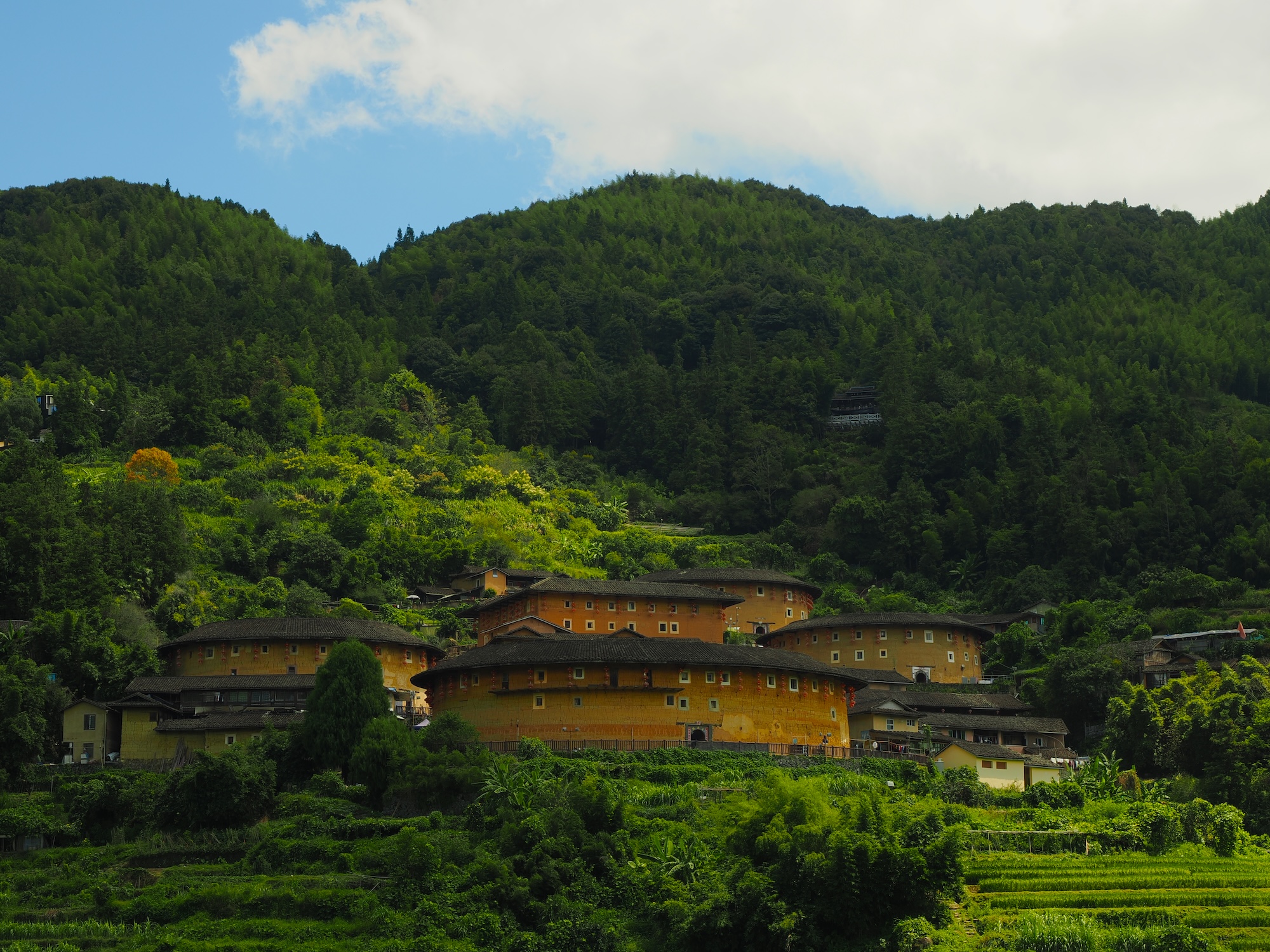
The Fujian Tulou (土楼) are ancestral fortresses historically inhabited by family clans.
Circular or rectangular at the base, they are built with earth and wood, have several stories high, and have been a UNESCO World Heritage Site since 2008.
Still inhabited, some Tulou date back to the 12th century. And their shapes do not leave anyone indifferent. The size, seen from street level, is impressive. The unquestionable beauty of their simple exterior forms contrasts with the complexity of their lively interior courtyards.
Towards the outside, they only have a handful of loopholes and hatches for cannons. And only one thick, metal-covered door allows passage inside.
Although tens of thousands of Tulou-type buildings, only 46 of them are distinguished as UNESCO World Heritage Site.
UNESCO mentions the Tulou:
“The Fujian tulou constitute a unique example of human settlements based on community life and defensive organization. They embody the traditional Confucian ideas of the clans from the Central Plain and reflect the defensive needs of the era. In harmony with the surrounding environment, they are an exceptional model of housing.”
Where are the Tulou?
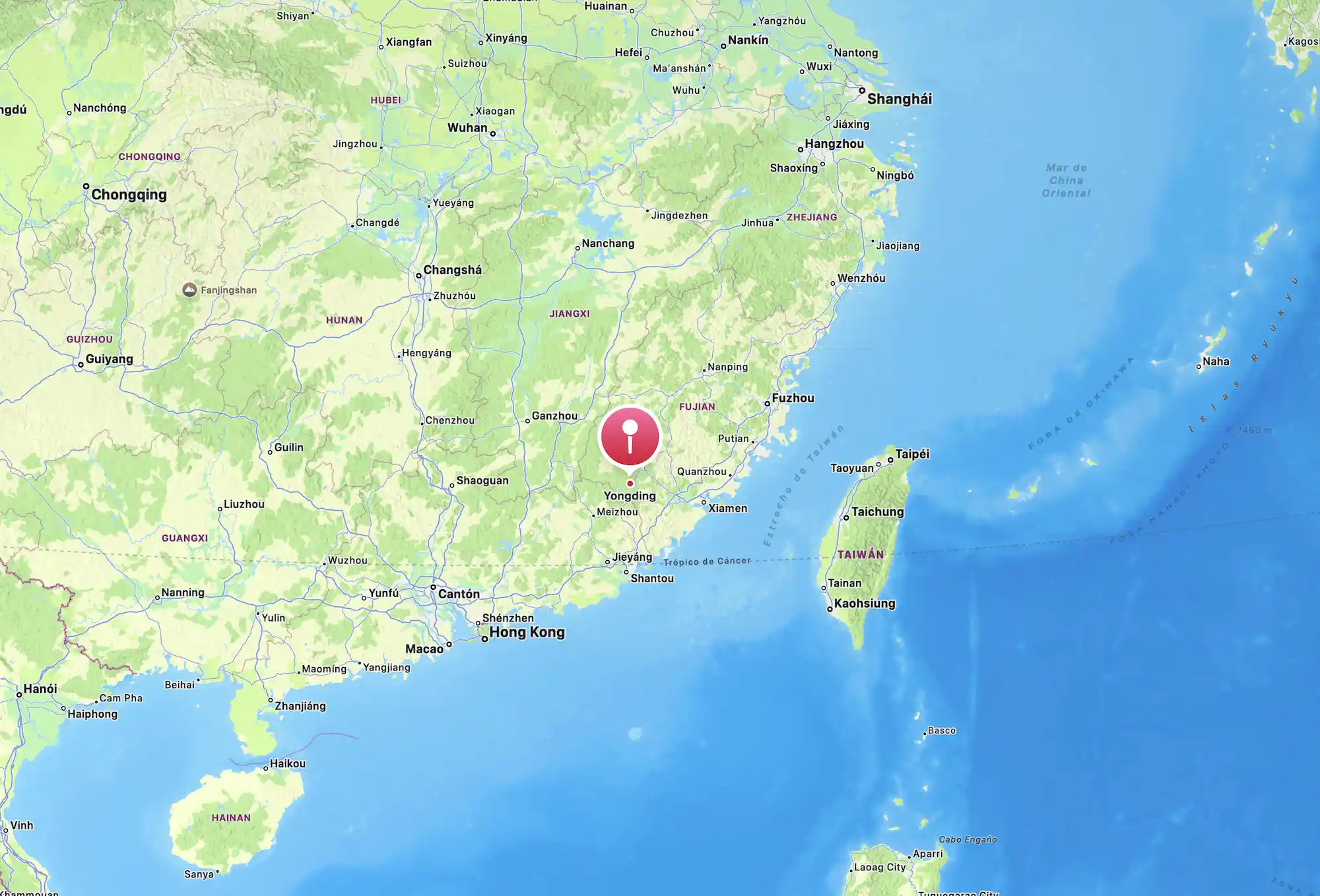
The Tulou are located in Fujian province, in the inland mountains next to the Taiwan Strait.
Very close to the beautiful city of Xiamen, they are distributed throughout a vast mountainous territory of an intense green color, with abundant fields on slopes and terraced lands full of rice, tea, and tobacco plantations.
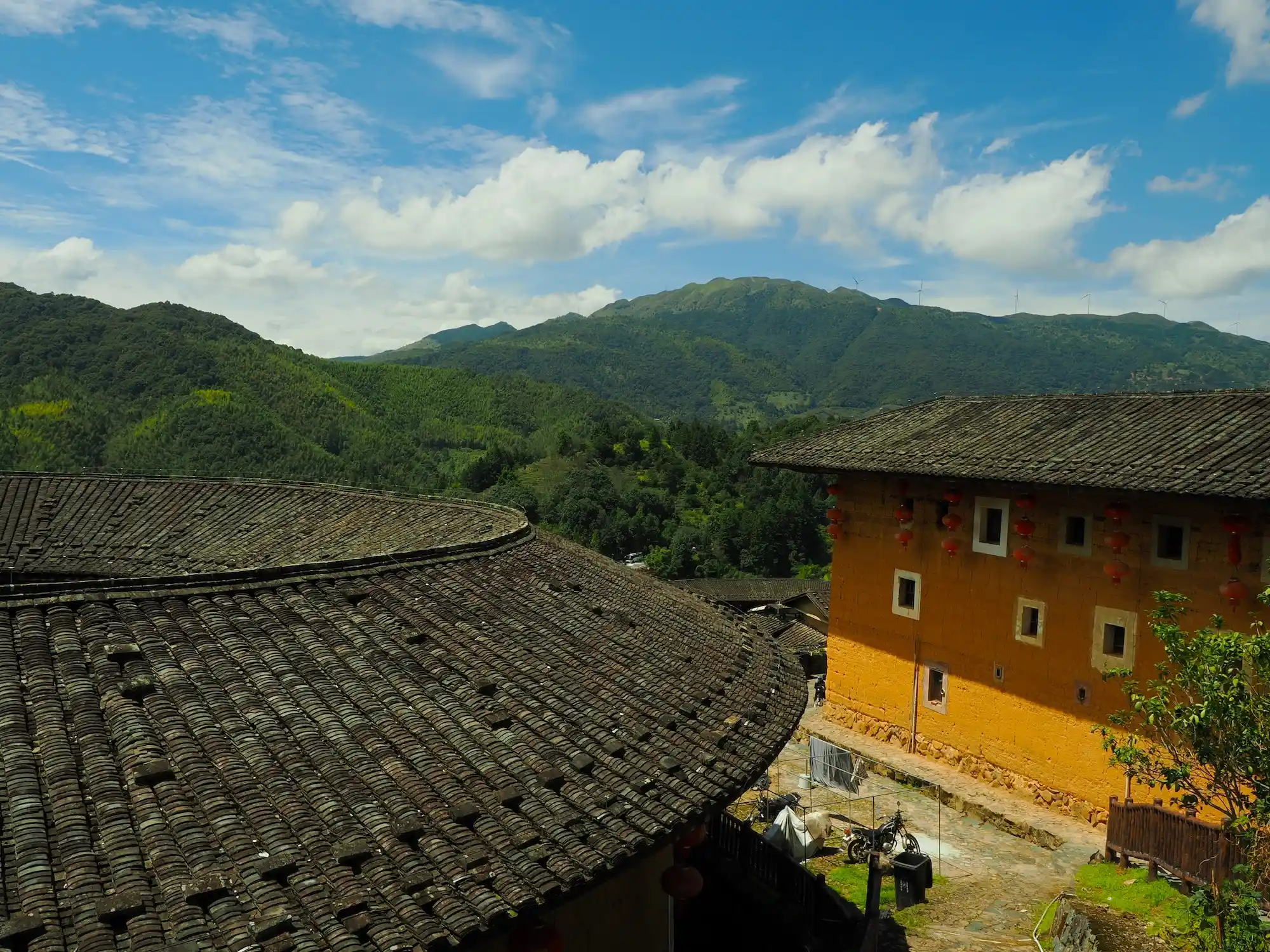
Nowadays, it is easy to reach some of them by car from nearby train stations or even from Xiamen itself.
History and Origin of the Fujian Tulou
The Tulou originated during the Northern Song Dynasty (around the year 1120), when the Hakka, a sub-group of the Han ethnicity, migrated from northern to southern China, to Fujian, seeking refuge from the wars and territorial disputes in the north.
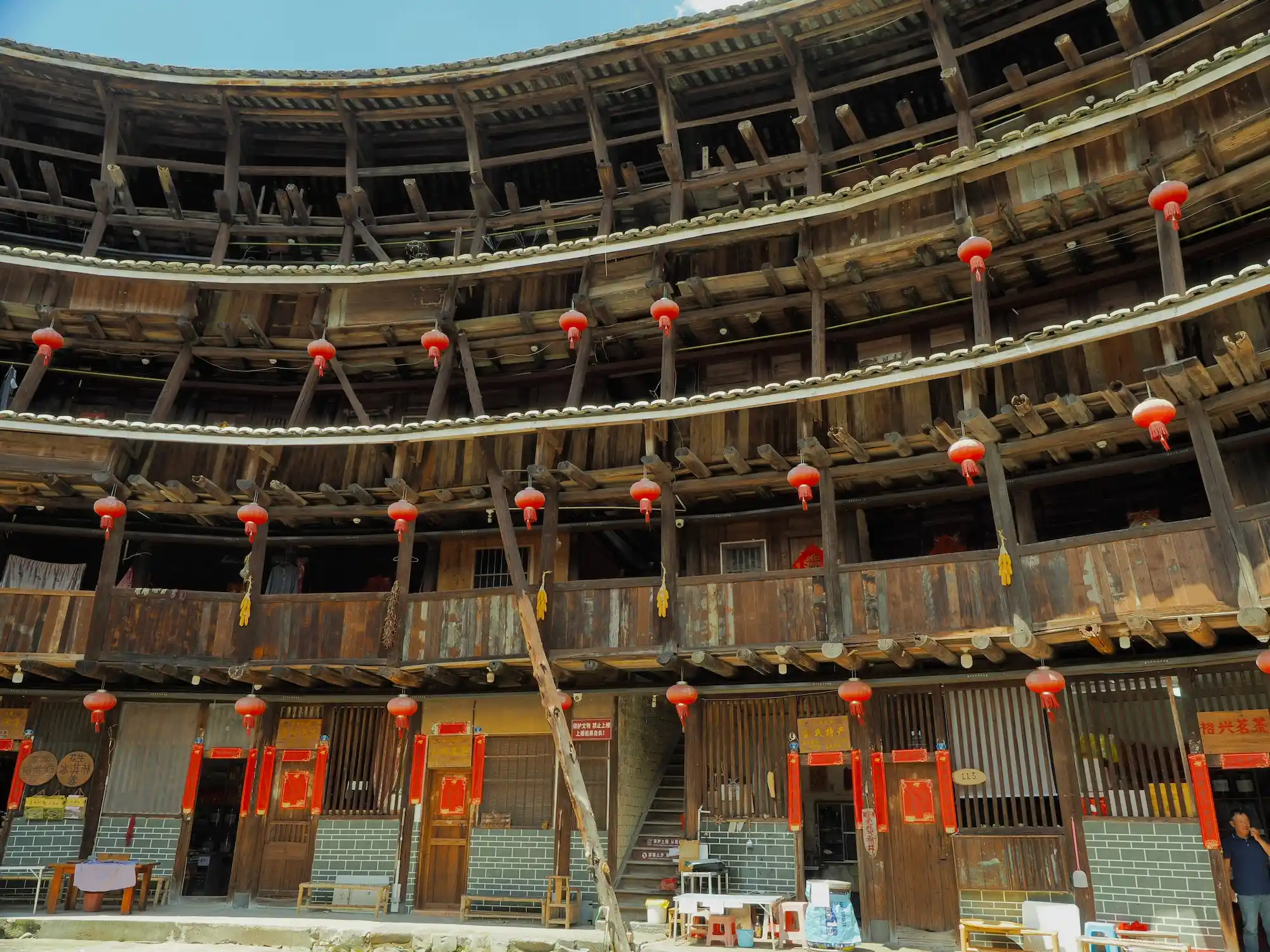
The Hakka conceived the Tulou constructions as forts and dwellings to protect the families, fostering community life and self-sufficiency among them.
They house several families, with rooms distributed across several floors surrounding the courtyard, which often served for cultivation.
They represent a unique model of human settlement based on community life, security, and respect for ancestors.
Construction of the Tulou
The Hakka combined their construction knowledge from the northern Chinese plains with the materials and resources available in southern China.
Aware of the seismic activity in that area, they built 3 and 4-story buildings resistant to earthquakes and floods, with the oldest ones being rectangular in plan and the most modern ones circular.
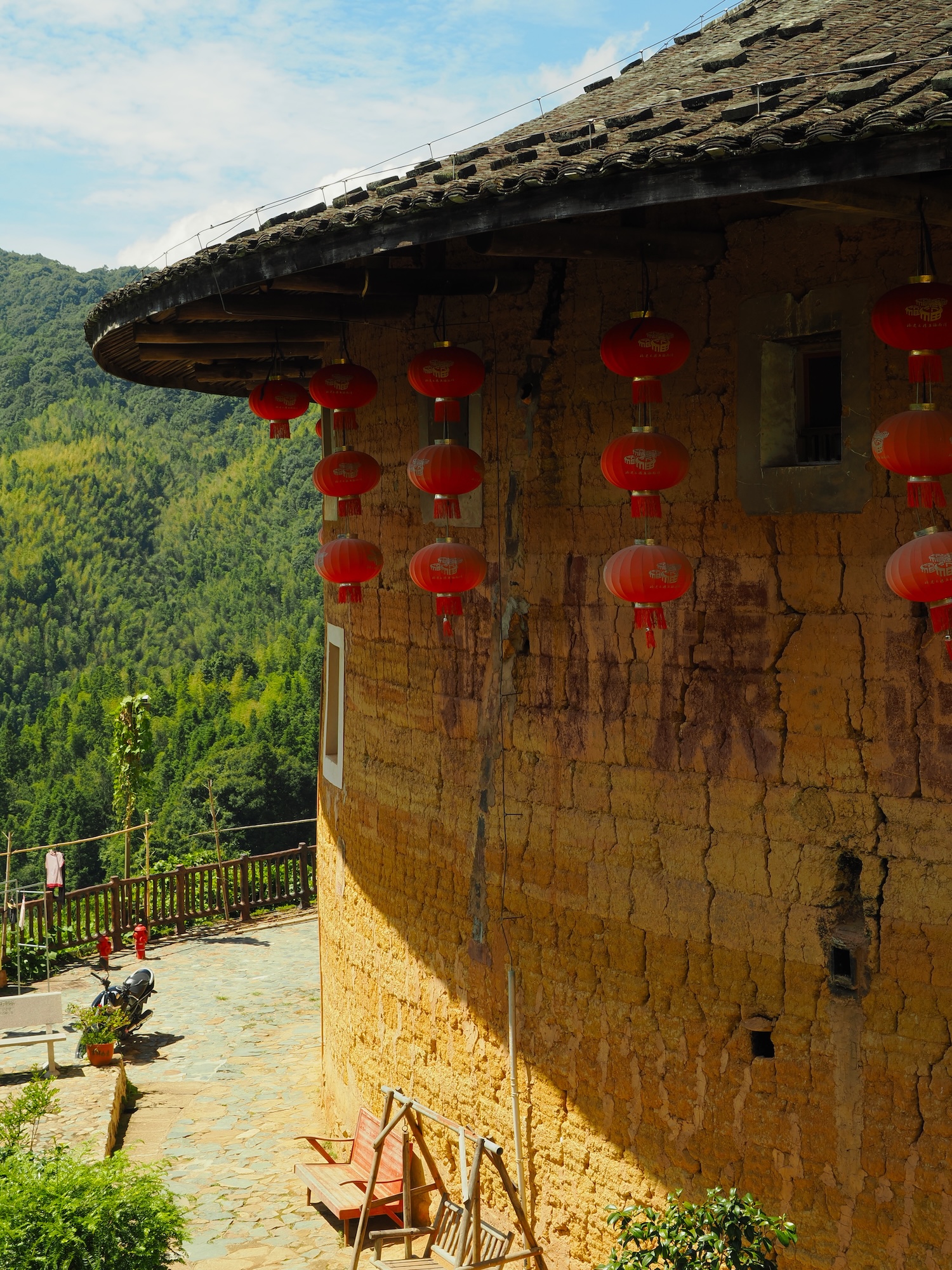
Some have walls up to a meter and a half thick. Built on strong rock foundations, their walls are made of a mixture of clay, sand, lime, brown sugar, egg yolks, and ground glutinous rice as a binding agent. Light and resistant bricks, along with fir and pine wood, were also used.
The Hakka have a saying: “Water does not wilt pine, wind does not knock down fir.”
The large interior courtyards with abundant light and ventilation serve today as communal space for growing food, raising chickens, cooking, and hanging laundry.
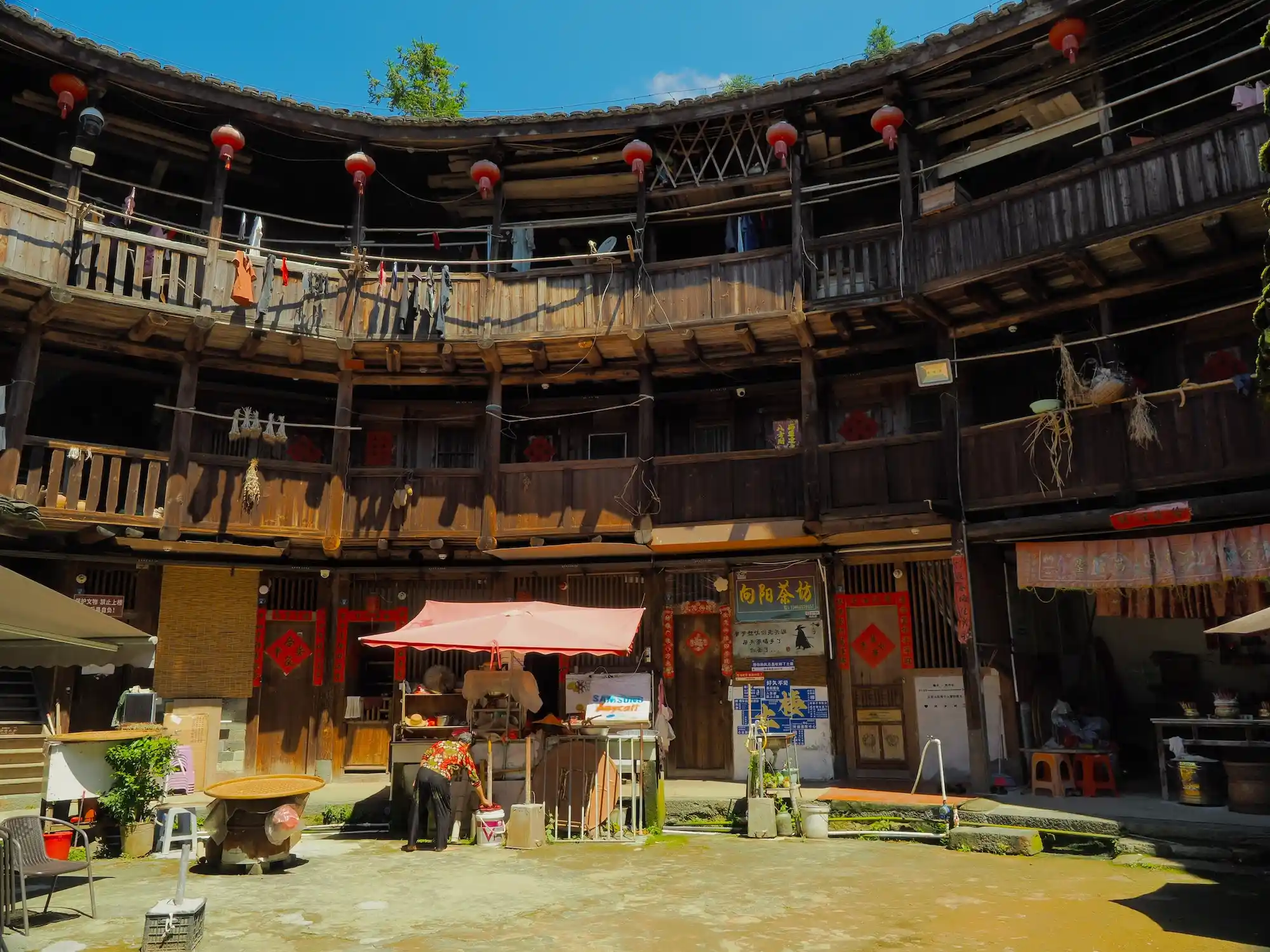
When to Visit the Tulou
The best time to visit the Tulou clusters is undoubtedly spring and autumn. With moderate weather, you can take advantage of the good conditions to walk around and admire the buildings and surrounding fields.
Which Tulou Can Be Visited?
There are thousands of constructions. Some are very well known and more accessible for a one or two-day visit. The deeper you venture into the territory, the fewer tourists you will see.
If you have limited time, there are some Tulou that are easily accessible: Tianluokeng, Yongding, Yuchang, Yunshuiyao, and Taxia Village. Here are three examples:
The Tianluokeng Tulou Cluster (田螺坑土楼群)
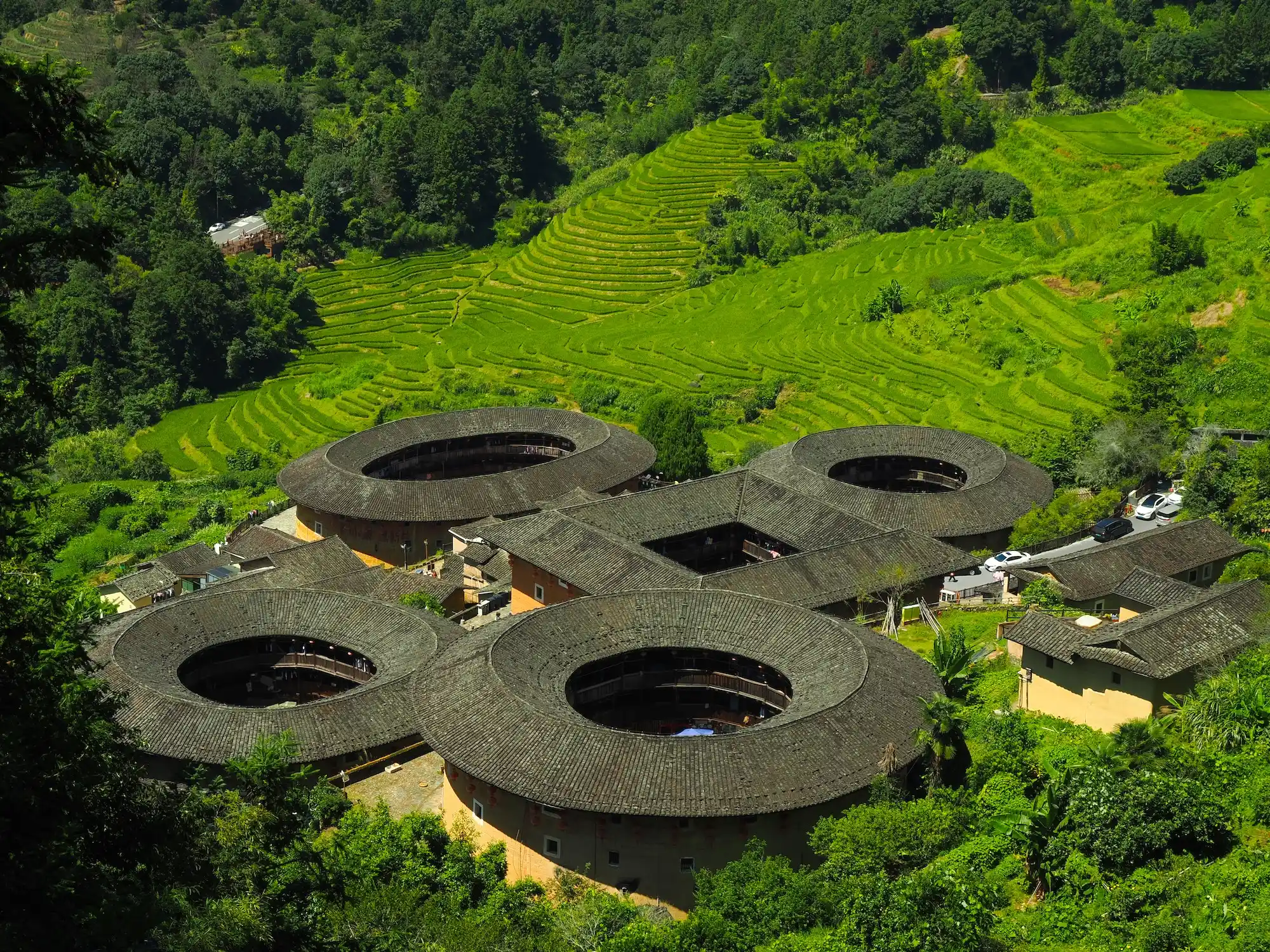
Iconic for the beauty of the cluster, in China it is known as “the four dishes and the soup.” This group of buildings is located in a small village with different heights, and a visit can take one to two hours.
Yuchang Tulou (裕昌楼)
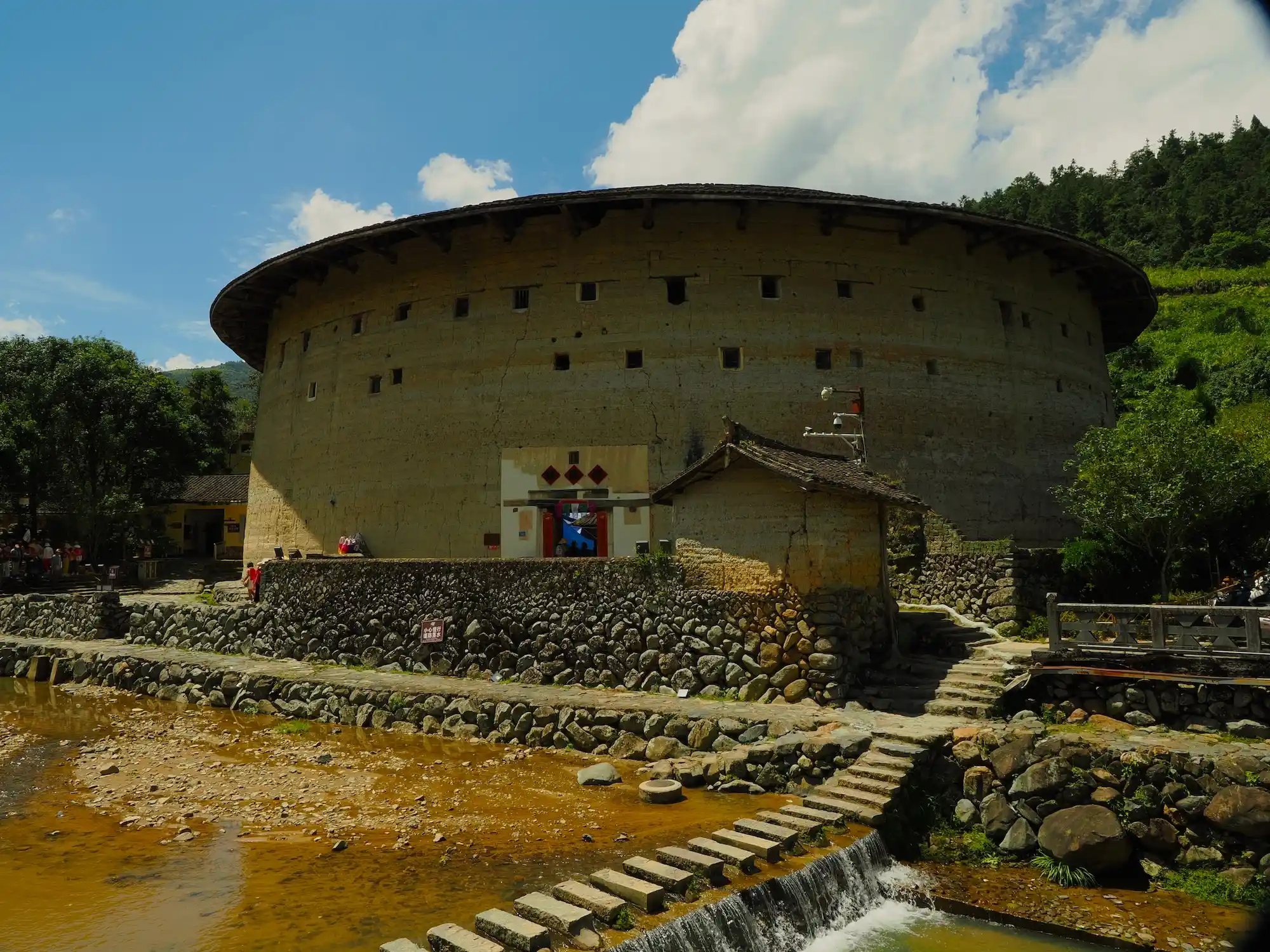
Built in the 14th century (around 1308), it is famous for being one of the oldest and the first circular Tulou to exist in Fujian province.
It is known as the “Leaning Tower of the Tulou” because its wooden pillars are tilted in different directions, although the structure has demonstrated remarkable resistance throughout the centuries.
Yongding Tulou (永定土楼)
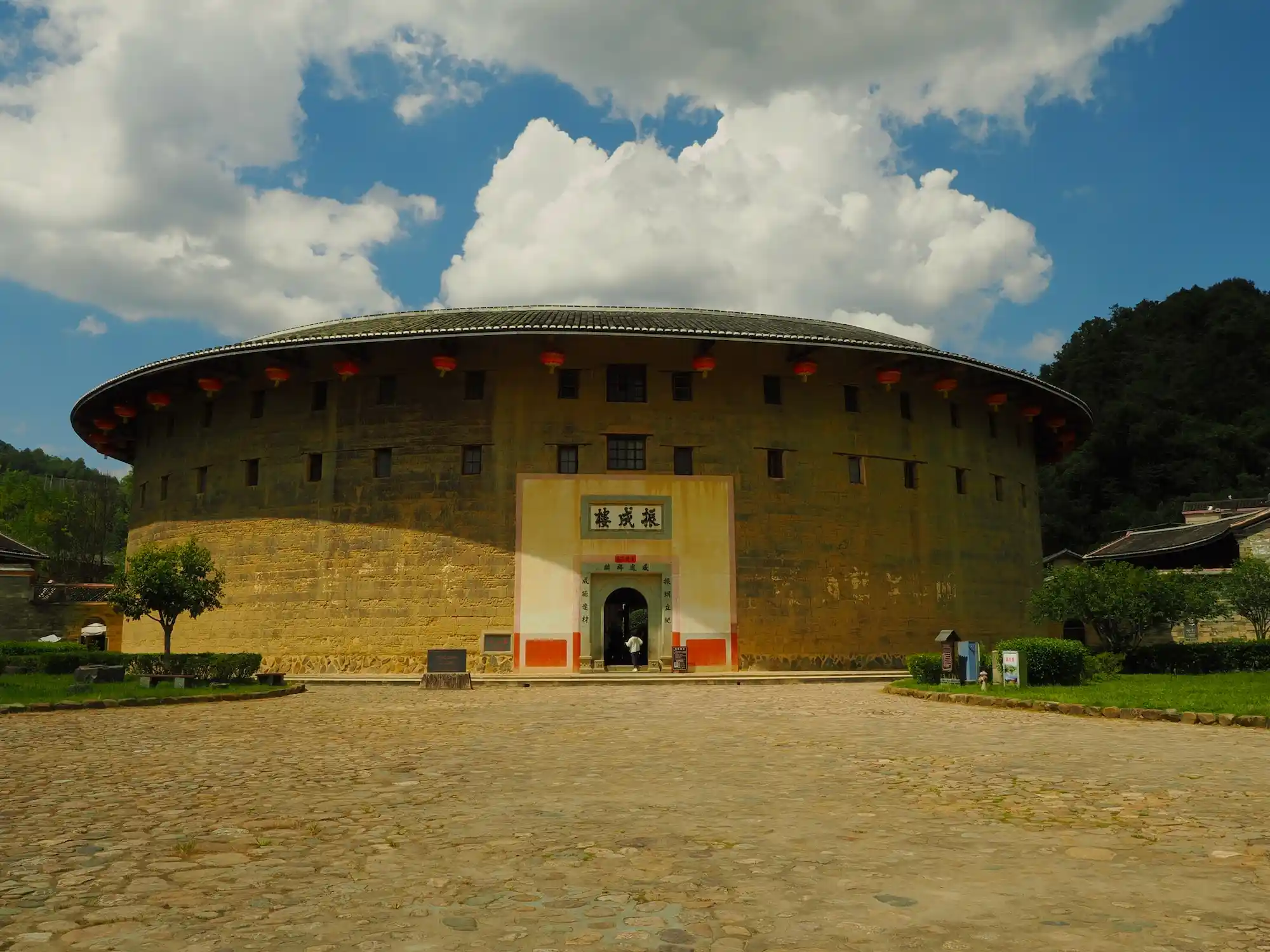
23 of the 46 Fujian Tulou buildings selected by UNESCO are located in the village of Yongding. This village is often called the museum of the Tulou due to the quantity and diversity it contains.
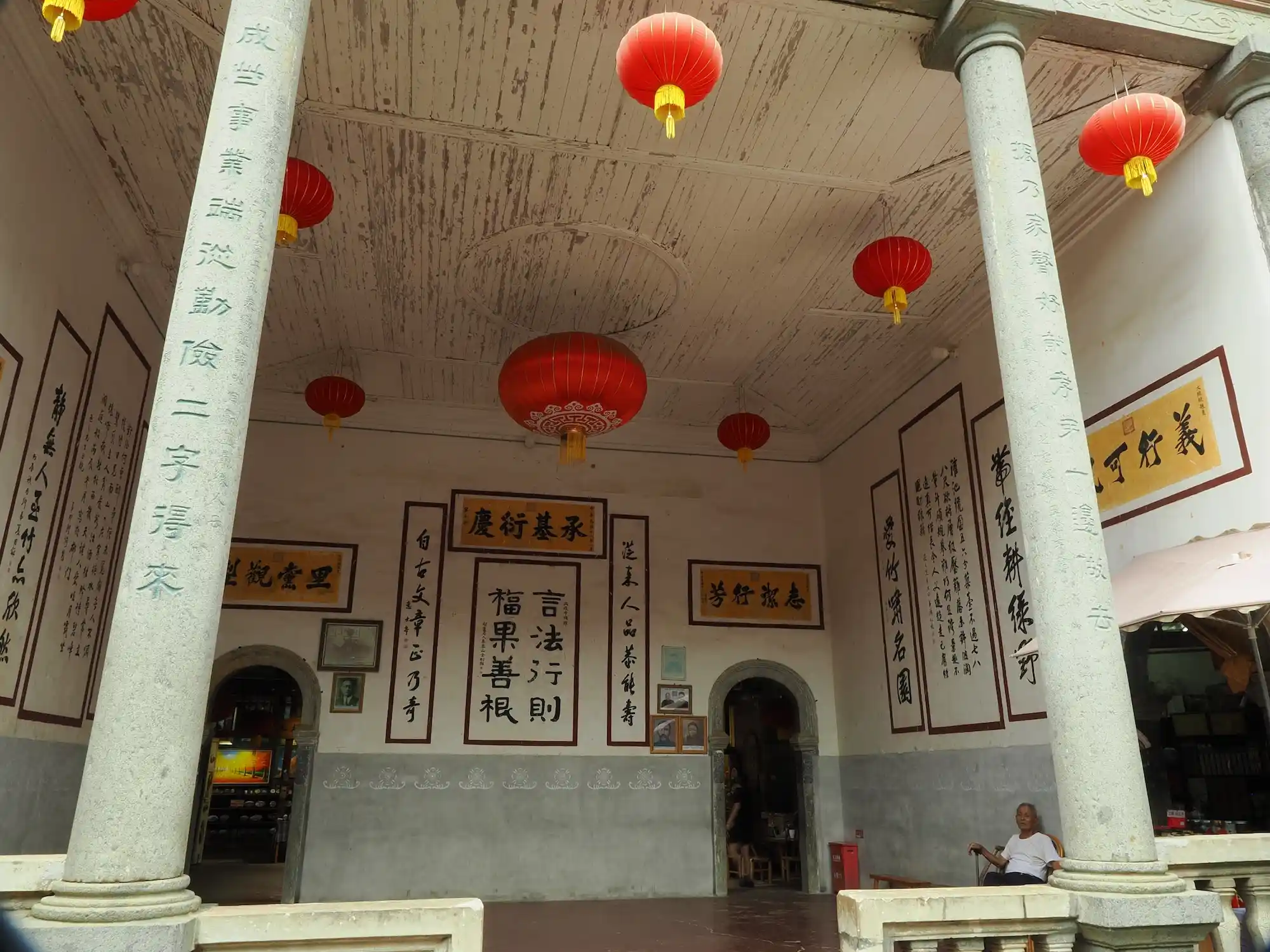
Also located there is the Chengqi building (承启楼), the largest of the circular Tulou, with up to 400 rooms and 4 concentric rings of buildings inside. These characteristics have led it to be called the King of Tulou.
This building is also Mulan’s house in the Disney film.
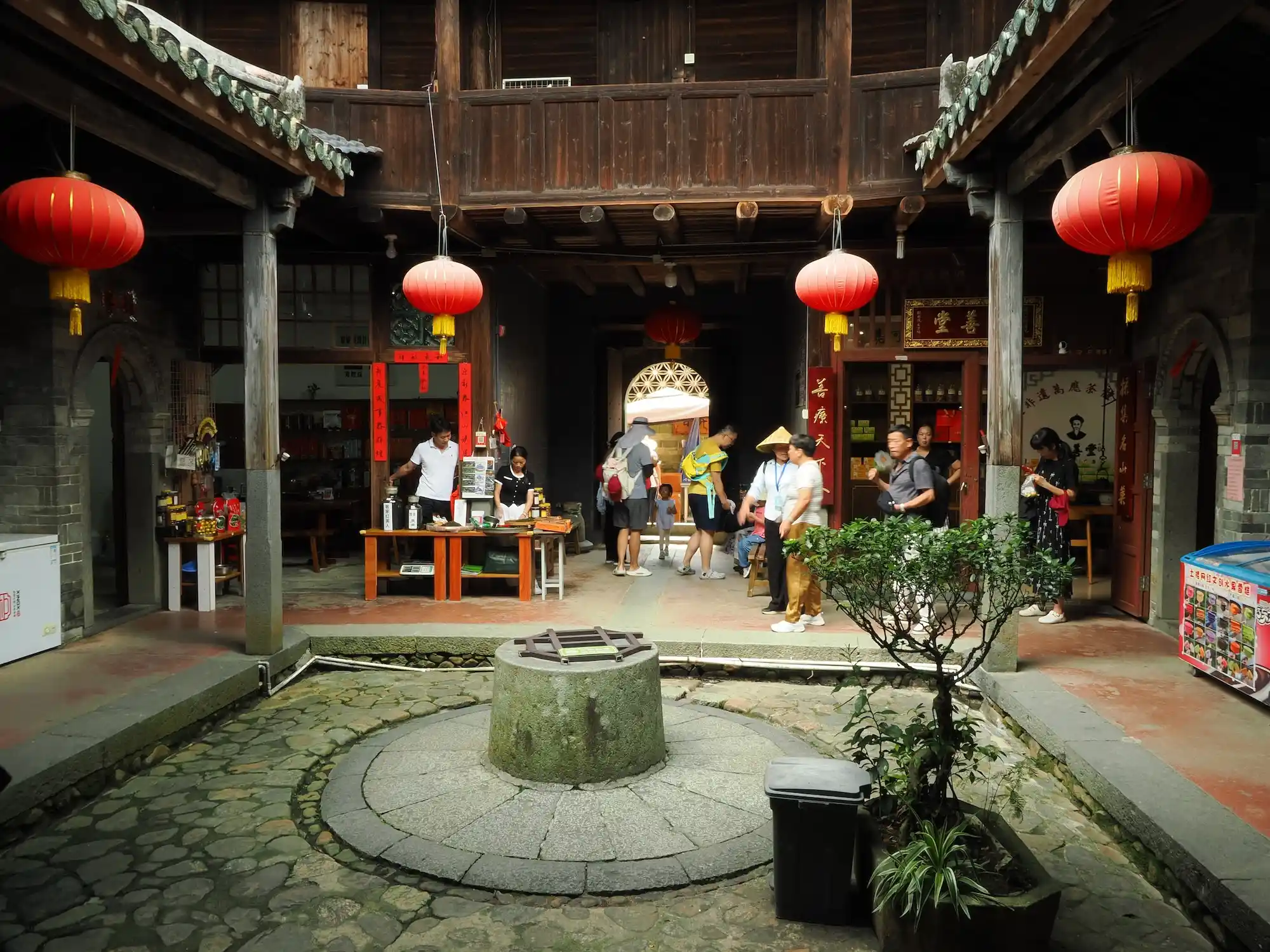
How to Visit the Tulou?
Although they are scattered throughout the mountains, it is relatively easy to visit several of them in one day, especially if you do it with an organized tour or a private driver to help you go from village to village.
If you want to visit them in depth, we recommend sleeping there and dedicating at least two days. There are some simple accommodations inside the Tulou. If you want to experience sleeping in an authentic Tulou as part of your trip, write to us and we will add it to your itinerary.
To get there, the most practical option is to depart from the nearby city of Xiamen, which has a high-speed train station and a well-connected airport.
Do you want to visit the Fujian Tulou? Write to us and the Asiahop team will prepare a custom trip for you to travel through China your way. Get your complete travel plan with flights, trains, and hotels to experience the authentic China with us.